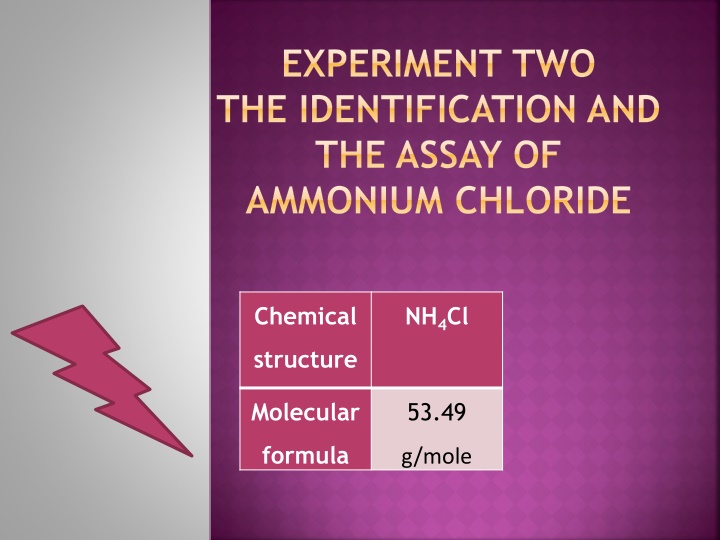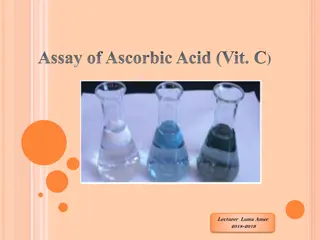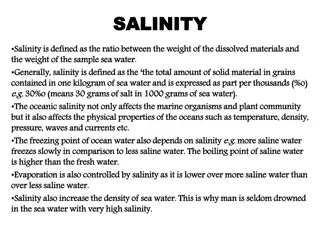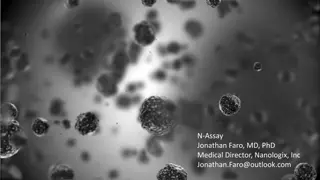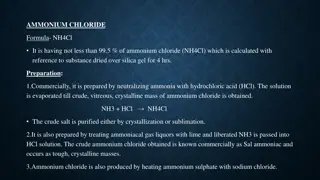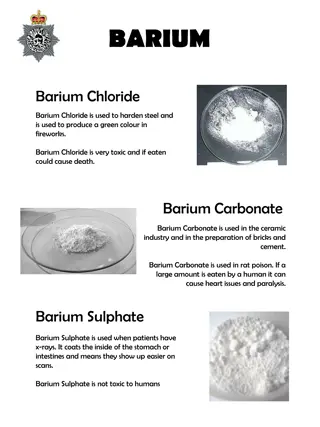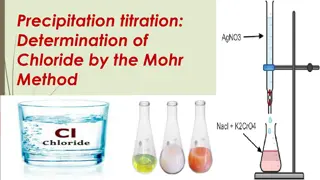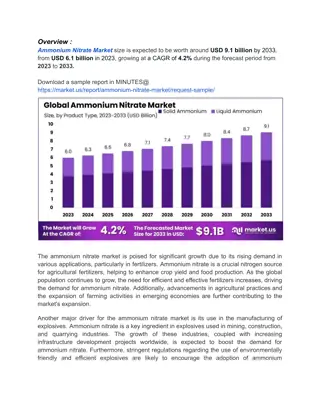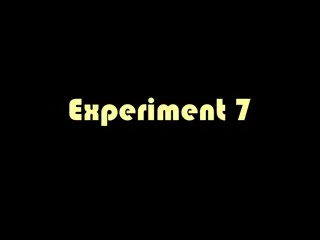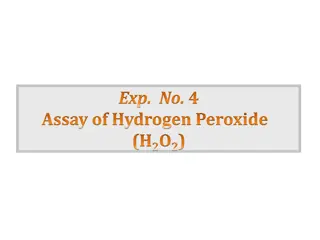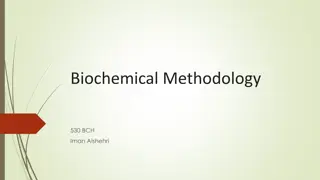Identification and Assay of Ammonium Chloride: Experiment Insights
Explore the identification and assay process of Ammonium Chloride (NH4Cl), a weak inorganic acid commonly used in various applications. Discover its chemical properties, synthesis, reactivity, identification tests, and details of a titration process using NaOH and phenolphthalein as indicators.
Download Presentation

Please find below an Image/Link to download the presentation.
The content on the website is provided AS IS for your information and personal use only. It may not be sold, licensed, or shared on other websites without obtaining consent from the author.If you encounter any issues during the download, it is possible that the publisher has removed the file from their server.
You are allowed to download the files provided on this website for personal or commercial use, subject to the condition that they are used lawfully. All files are the property of their respective owners.
The content on the website is provided AS IS for your information and personal use only. It may not be sold, licensed, or shared on other websites without obtaining consent from the author.
E N D
Presentation Transcript
EXPERIMENT TWO THE IDENTIFICATION AND THE ASSAY OF AMMONIUM CHLORIDE Chemical NH4Cl structure Molecular 53.49 formula g/mole
INTRODUCTION: Ammonium chloride (NH4Cl) is a weak inorganic acid, exists as a white crystalline powder or fine crystals. As most inorganic salts, ammonium chloride is freely soluble in water.
SYNTHESIS NH3+ HCl NH4Cl
Uses: As nitrogen source, added to fertilizers and animal nutrients. Pharmacological uses: As expectorant in cough preparations. As acidifying agent to correct metabolic alkalosis.
Reactivity As a weak acid, it can react with strong base such as sodium hydroxide to give ammonia gas, sodium chloride and water.
IDENTIFICATION TEST: Color of methyl red indicator according to change of pH Acidity testing Dissolve 1.0 g of ammonium chloride in 10 ml distilled water. Add few drops from methyl red indicator. Observe the color change.
IDENTIFICATION TEST: Chemical identification testing: Make a solution of 0.1 g of ammonium chloride in water (2 ml) in a test tube. Acidify with few drops 2M nitric acid. Add 0.4 ml silver nitrate (AgNO3) solution and shake very well. Observe the color. what is the chemical structure of this precipitate?
Informations about today titration Titrant : 1M NaOH Titrand: ammonium chloride Indicator: phenolphthalein Type : acid base titration Note to have good titration: The rate of reaction is rapid ,the reaction is complete & can be expressed by chemical equation in addition to using a standard solution which is sufficiently stable & react rapidly & completely with analyte &undergo a selective reaction with the analyte that can be described by a balanced equation.
PHENOLPHTHALEIN INDICATOR COLOR CHANGED ACCORDING TO PH
ASSAY TEST: Dissolve 1.0 g of ammonium chloride in 20 ml of distilled water. Add a mixture of 5 ml formaldehyde solution which is previously neutralize with 0.1 M NaOH (why?) and 20 ml distilled water. Leave it for 2 minutes, and then titrate slowly with 1M sodium hydroxide using Phenolphthalein as indicator.
Formaldehyde was added. Why? Suggest one reason. Neutralization of formaldehyde is done Why? Suggest one reason. How ?
CALCULATIONS: Note: each 1 ml of 1M sodium hydroxide is equivalent to 53.49 mg of NH4Cl. Note: according to British Pharmacopeia, ammonium chloride sample should contain not less than 99% and not more than 100.5% of pure, dry NH4Cl (compare your result with this accepted range)
SOURCES OF ERRORS Using dirty glass. Rinsing burette or pipette with wrong solution. Not filling burette properly. Not transferring all solid /liquid. Transferring excess volume of liquid. Using wrong reagent. Leaking titrant from burette. Note : NaOH may adsorb atmospheric CO2 thiosulfate may decompose slowly
THINK What is the difference between qualitative test & quantitative test? Which point is happened first the end point or equivalence test?
THANKS FOR LISTENING Any questions?
